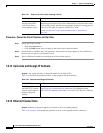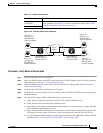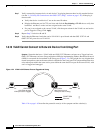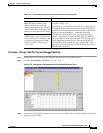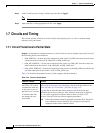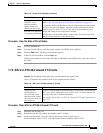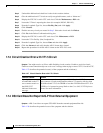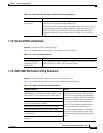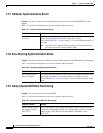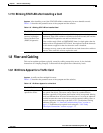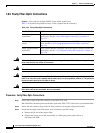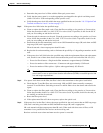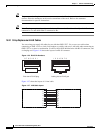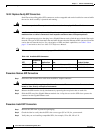
1-70
Cisco ONS 15327 Troubleshooting Guide, R3.4
April 2003
Chapter 1 General Troubleshooting
Circuits and Timing
1.7.7 Holdover Synchronization Alarm
Symptom The clock is running at a different frequency than normal and the HLDOVRSYNC alarm
appears.
Table 1-31 describes the potential cause of the symptom and the solution.
1.7.8 Free-Running Synchronization Mode
Symptom The clock is running at a different frequency than normal and the FRNGSYNC alarm appears.
Table 1-32 describes the potential cause of the symptom and the solution.
1.7.9 Daisy-Chained BITS Not Functioning
Symptom You are unable to daisy-chain the BITS.
Table 1-33 describes the potential cause of the symptom and the solution.
Table 1-31 Holdover Synchronization Alarm
Possible Problem Solution
The last reference input
has failed.
The clock is running at the frequency of the last valid reference input. This
alarm is raised when the last reference input fails. See the
“2.6.94 HLDOVRSYNC” section on page 2-73 for a detailed description of
this alarm.
Note The ONS 15327 supports holdover timing per Telcordia GR-4436
when provisioned for external (BITS) timing.
Table 1-32 Free-Running Synchronization Mode
Possible Problem Solution
No reliable reference
input is available.
The clock is using the internal oscillator as its only frequency reference. This
occurs when no reliable, prior timing reference is available. See the
“2.6.90 FRNGSYNC” section on page 2-71 for a detailed description of this
alarm.
Table 1-33 Daisy-Chained BITS Not Functioning
Possible Problem Solution
Daisy-chaining BITS is
not supported on the
ONS 15327.
Daisy-chaining BITS causes additional wander buildup in the network and
is therefore not supported. Instead, use a timing signal generator to create
multiple copies of the BITS clock and separately link them to each
ONS 15327.



